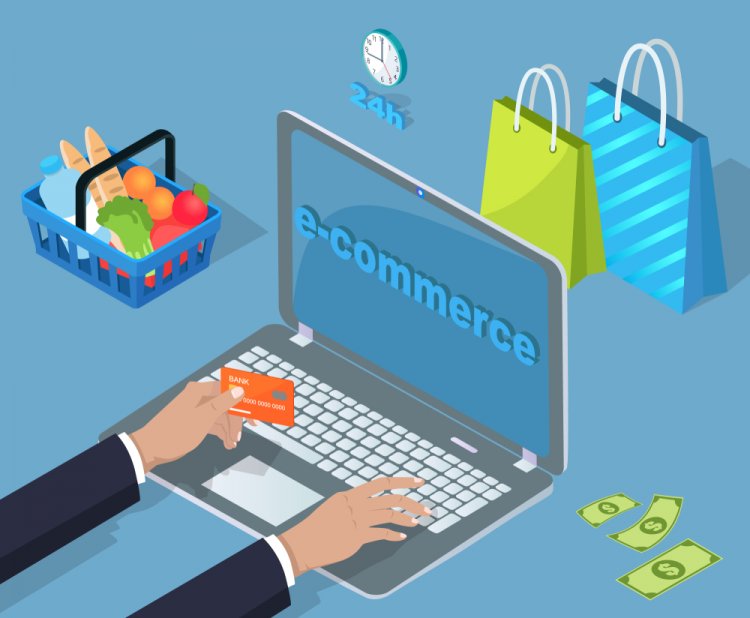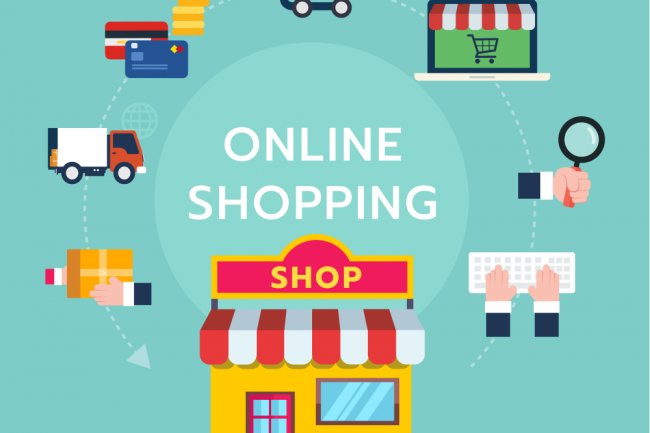WHAT ARE THE DIFFERENT TYPES OF E-COMMERCE?
E-commerce or electronic commerce brings together all commercial transactions taking place remotely through electronic and digital interfaces.

What is e-commerce?
The growth of e-commerce in today's world
The word that immediately comes to mind when talking about e-commerce is growth. Indeed, many studies have been carried out recently. They show that over the past 14 years, the growth of e-commerce companies has skyrocketed in all areas.
In sum, growth projections estimate that by 2022, e-commerce revenues will exceed $ 638 billion in the United States alone.
Overall, e-commerce growth projections are also on an upward trajectory. They show that retail sales could exceed $ 4.058 trillion by 2020.
Other data reinforces the growth trend of e-commerce:
- there could be as many as 2.14 billion digital buyers in the world by 2021,
e-commerce clothing, footwear and accessories sales in the United States are expected to exceed $ 123 million by 2022, - shoppers spend an average of 36% of their budget online.
But what's exciting is that there are still so many possibilities in the online marketplace. Indeed, some - studies show that e-commerce sales currently represent on average around 9.1% of total retail sales. This means that there are still endless opportunities for brands to launch an e-commerce site and expand their reach.
Also, it is important to consider the expansion of online selling possibilities through omni-channel retailing (such as adding Amazon and eBay storefronts to your selling approach, for example). So it's easy to see that now is the best possible time to grow an e-commerce business.
The definition of e-commerce
Essentially, e-commerce (or electronic commerce) is the buying and selling of goods (or services) over the Internet.
E-commerce encompasses a wide variety of data, systems and tools for online buyers and sellers. It spans from mobile shopping to online payment encryption and beyond.
Most businesses with an online presence use an e-commerce site and / or platform. This allows them to conduct online marketing and sales activities and oversee logistics and fulfillment.
The different types of e-commerce

1. B2C (Business-to-Consumer)
B2C e-commerce encompasses transactions between a business and a consumer.
It is one of the most widely used sales models in the context of e-commerce. When you buy shoes from an online shoe retailer, it is a business-to-consumer transaction.
2. B2B (Business-to-Business)
Business-to-business e-commerce is sales made between businesses, such as a manufacturer and a wholesaler or retailer.
This type of e-commerce is not consumer oriented and only exists between companies.
Most often, business-to-business sales focus on raw materials or products that are repackaged or combined before being sold to customers.
3. C2C (Consumer-to-Consumer)
One of the earliest forms of e-commerce is the C2C model. It relates to the sale of products or services between, you guessed it: customers.
These include consumer-to-consumer sales relationships such as those seen on eBay or Amazon, for example.
4. C2B (Consumer-to-Business)
The C2B model overturns the traditional e-commerce model (and this is commonly seen in crowdfunding projects).
C2B means that individual consumers make their products or services available to commercial buyers.
An example of this would be a business model like iStockPhoto. Archival photos are available online for purchase directly from various photographers.
5. B2A (Business-to-Administration)
This model covers transactions between businesses and online administrations. An example would be products and services related to legal documents, social security, etc.
6. C2A (Consumer-to-Administration)
Same idea here, but with consumers selling products or services online to an administration. The C2A model could include online consultation services for education, online tax preparation, etc.
Both B2A and C2A focus on improving efficiency in government by supporting new information and communication technologies.
Covid-19 & e-commerce: take advantage of confinement to create your online store for free!

Following the implementation of national containment, the French economy is at a standstill. Between companies which can no longer or with difficulty continue their activity properly, like the 20,000 new Pôle Emploi registrations during the 1st week of confinement, and consumers who are much less in the mood to consume, e-commerce sites are rising to the front by multiplying promotions and commercial offers. The objective is clear: to offer products at attractive prices in order to boost consumption via the Internet and limit the damage caused by the Covid-19 pandemic to the companies concerned and more generally to the national economy. Moreover, this option of online commerce has been adopted by all brands able to do so thanks to the maintenance of delivery services, but sometimes resulting in longer processing times. Consequently, the brands have also extended the return deadlines.
In a context that does not yet have a dated end, if you were planning to launch your e-commerce site, it is a good idea to focus on it now in order to prepare for the end and after containment. Especially since e-commerce is doing very well in France as shown by the latest study by FEVAD (Federation of E-commerce and Distance Selling). Through this study, FEVAD takes stock of e-commerce 2019 and announces that the threshold of 100 billion euros has been crossed for electronic commerce in France, with exactly 103.4 billion euros in 2019 ( + 11.8% compared to 2018). This growth in the sector is also explained by the diversification of the offer with 25,000 new e-commerce sites identified in 2019 for a total of more than 190,000 e-commerce sites in France.
Launching your e-commerce site during confinement is all the more interesting with the #ecommercesolidaire initiative launched by WiziShop, a French e-commerce solution (which CEO Gregory Beyrouti was interviewed for some time ago) and other actors like Prestashop. This outpouring of generosity is a response to the appeal of Cédric O, secretary of state in charge of digital, who called on all French digital companies capable of contributing to the national effort to counter the impact of this crisis. The objective of this movement is to limit the economic damage of the Covid-19 health crisis by allowing physical merchants affected by the confinement to develop their activity on the internet, and by helping online stores that offer products that may come in help for sick or confined people. To achieve this, the initiative brings together e-commerce players in France and abroad (solution, agency, etc.) wishing to contribute to this solidarity movement through free offers. Moreover, if you are an e-commerce player, you can always contribute to the #ecommercesolidaire initiative and join the movement.
The offers currently available to create your online store for free (or almost)
With the current situation and the solidarity initiative, you can create your online store for free. Indeed, the solutions allowing you to develop your e-commerce activity through a commercial site set up free limited-time offers to help you get started.
DIFFERENCES BETWEEN A WEBSITE, A BLOG, AN E-COMMERCE SITE AND A FORUM

The website
A website is a set of files stored on a server written in a specific language allowing to be transcribed in a structured and readable way for the user (we speak of HTML language).
On the internet, the website is made up of a set of pages on which you will find different data, information: text, images, videos, links to other pages or to other sites, as desired and the designer's imagination!
The presentation of a website will therefore vary from one site to another, depending on the HTML code used.
Websites can be informative, educational, commercial, etc.
The blog
The blog is a form of a website.
However, it is generally structured differently and makes it easy for the person (s) responsible for it to post.
Today, there are many blogs that deal with subjects as diverse as they are varied: travel, cooking, hiking, outdoor snail racing ...
The publications or articles are generally classified chronologically (the oldest is found last).
A living blog is a blog on which new articles are posted regularly.
The blog alone is rarely commercial. It can help people discover a product or service, but not generate an act of purchase.
Having said that, a blog can be incremented to a commercial website. We will then find different pages on the site such as the home page, the pages concerning the products / services offered, the contact page and the page on which we will find the various articles of the blog (often called "News", "News" …).
The e-commerce site
This is a website for commercial purposes, as these merchant sites have an online store for purchasing products or services.
Payment for items is mainly made online by secure payment offered by banks or through dedicated platforms (eg Paypal).
However, on some sites there is the possibility of paying by check but this payment method, when offered, generates longer processing times than with online payment because the seller waits to receive the check and the payment. have cashed before sending the goods.
Orders are managed through a dedicated interface to indicate the stock status of different products and to process orders.
The forum
The forum is also a type of website whose aim is to allow its users to be able to discuss a predefined topic or with people with the same interests.
Discussions can then be organized around the main topic.
The forum can be public and open to all or private.
The forums are generally managed by one or more moderators who are responsible for checking that the exchanges remain cordial and comply with the forum's charter of conduct if there is one.













